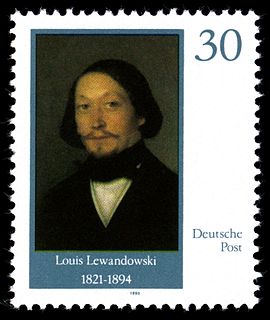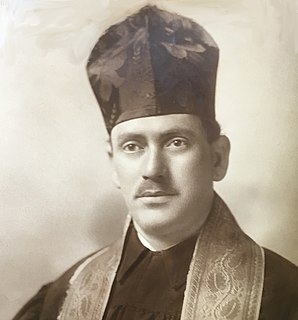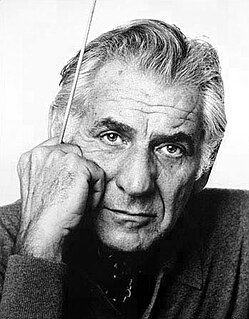Aaron Jay Kernis is a Pulitzer Prize- and Grammy Award-winning American composer serving as a member of the Yale School of Music faculty. Kernis spent 15 years as the music advisor to the Minnesota Orchestra and as Director of the Minnesota Orchestra's Composers' Institute, and is now currently the Workshop Director of the Nashville Symphony Composer Lab. He has received numerous awards and honors throughout his thirty-five year career. He lives in New York City with his wife, pianist Evelyne Luest, and their two children.

Louis Lewandowski was a Polish-Jewish and German-Jewish composer of synagogal music.
Pizmonim are traditional Jewish songs and melodies sung with the intention of praising God as well as learning certain aspects of traditional religious teachings. They are sung throughout religious rituals and festivities such as prayers, circumcisions, bar mitzvahs, weddings and other ceremonies.

G. Schirmer, Inc. is an American classical music publishing company based in New York City, founded in 1861. The oldest active music publisher in the United States, Schirmer publishes sheet music for sale and rental, and represents some well-known European music publishers in North America, such as the Music Sales Affiliates ChesterNovello, Breitkopf & Härtel, Sikorski and many Russian and former Soviet composers' catalogs.

Since Biblical times, music has held an important role in many Jews' lives. Jewish music has been influenced by surrounding Gentile traditions and Jewish sources preserved over time. Jewish musical contributions on the other hand tend to reflect the cultures of the countries in which Jews live, the most notable examples being classical and popular music in the United States and Europe. However, other music is unique to particular Jewish communities, such as klezmer of Eastern Europe.
Jewish music is the music and melodies of the Jewish people. There exist both traditions of religious music, as sung at the synagogue and domestic prayers, and of secular music, such as klezmer. While some elements of Jewish music may originate in biblical times, differences of rhythm and sound can be found among later Jewish communities that have been musically influenced by location. In the nineteenth century, religious reform led to composition of ecclesiastic music in the styles of classical music. At the same period, academics began to treat the topic in the light of ethnomusicology. Edward Seroussi has written, "What is known as 'Jewish music' today is thus the result of complex historical processes". A number of modern Jewish composers have been aware of and influenced by the different traditions of Jewish music.
For the purposes of this article, “contemporary” refers to the period from 1967 to the present day, “Jewish” refers to the various streams and traits of Judaism practiced. Many Orthodox Jews use the term “religious” to refer to a strict adherence to Jewish law. For the purposes of this article, “religious” refers to the content and context of the music itself: liturgical or implicit references to the divine.
This article describes the principal types of religious Jewish music from the days of the Temple to modern times.

Moritz Henle was a prominent German composer of liturgical music and cantor of the Jewish reform movement.
Louis Harry Danto was a lyric tenor and cantor. He was acclaimed for his cantorial music, concert appearances and recordings of Italian, Russian, and French opera repertoire. Danto performed throughout North America, Europe and Israel, and recorded 24 solo albums.
Isadore Freed was a Jewish composer of Belarusian birth.
Leib Glantz was a Ukrainian-born lyrical tenor cantor (chazzan), Composer, Musicologist of Jewish music, Writer, Educator and Zionist leader.
Hugo Chaim Adler, was a Belgian cantor, composer, and choir conductor. He is primarily recognized for creating and popularizing contemporary versions of 19th-century Jewish cantorial music. He is the father of Samuel Adler, a prominent American composer of contemporary classical music.
Hazzan Abraham “Abe” Lubin is a London-born American Conservative Jewish Hazzan and former President of the Cantors Assembly, who is the cantor emeritus at Congregation Beth El in Bethesda, Maryland.
Julius Mombach was a 19th-century English synagogue composer. Tunkel (2012) regards him as "the most important of the composers of synagogue music in the Anglo-Jewish tradition of the 19th Century" whilst Elton (2003) doesn't even restrict this assessment to England.

Cantor Yitzchak Meir Helfgot is an Israeli-born Hasidic Orthodox Jewish cantor. He is widely regarded as the greatest living practitioner of Jewish cantorial arts on account of his great vocal dexterity and range. Like the famous operatic tenors he is capable of sustaining long passages in the difficult uppermost tessitura, while also possessing overt technical facility in executing ornate melismas.

Izso G. Glickstein was a naturalized American cantor (hazzan). Glickstein was born on September 20, 1889 in Chișinău, Moldova and died on April 17, 1947 in Roxbury, Massachusetts. He was a fourth-generation, world-class chazzan and one of the "leading Jewish singers in America ranking with Cantor Josef "Yossele" Rosenblatt and others of equal prominence." He served as Chief Cantor at multiple synagogues including Europe's largest and Leonard Bernstein's childhood synagogue in Roxbury, Massachusetts. He hosted a weekly radio program on Boston's WORL and was heard often on WNAC to popularize Hebrew music. Izso performed hundreds of concerts, was the President of the New England's Cantor's Association, and made multiple recordings of cantorial music.
Ben Zion Shenker (1925-2016) was a world-renowned American Hasidic composer and hazzan, associated with the Modzitz hasidic dynasty. Shenker was born in the heyday of the American hazzan. He became interested in the art as a child, and was performing on radio by his early teens. Soon after, he became close to Rabbi Shaul Taub, the Holocaust-surviving Modzitz Grand Rabbi, who was known for his mystical Hasidic compositions. He dedicated much of his life to recording and publishing the large stock of pre-war Modzitz songs, as well as Taub's post-war work. Shenker created a music label, Neginah, for the purpose of recording those songs, and himself became a composer of hundreds Modzitz moded songs.











